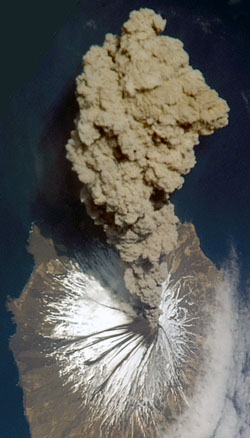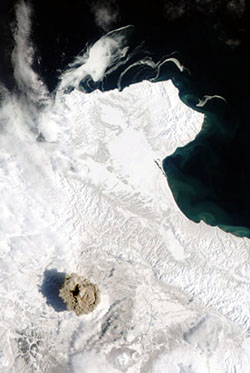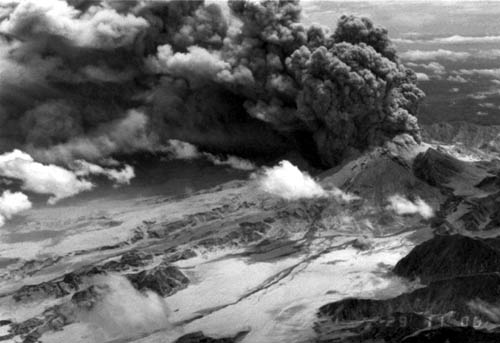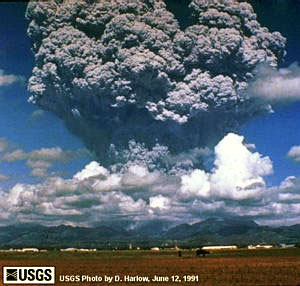Mount Tambora
Today, a terrible volcano gives birth to Frankenstein. The University of Houston's College of Engineering presents this series about the machines that make our civilization run, and the people whose ingenuity created them.
Volcanoes have been on my mind lately; they are an ever-lurking danger. Well, not here in Texas; but they haunt those parts of the world that lie along boundaries of tectonic plates. A so-called Ring of Fire includes Japan, the Aleutians, southern Alaska, and our Pacific Coast. Mount St. Helens was part of that one. Western South America suffers many volcanoes.
Perhaps the most deadly series runs through the Malay Archipelago. In another program, I talk about Mt. Toba, the most violent volcano that ever afflicted humans. When it erupted 85,000 years ago in Sumatra it split the human race into east and west branches for thousands of years. It killed everyone in between.
But we were then a small species. For volcanoes that, directly, or in their direct effects, killed the most humans, we turn to recorded history. Mount Vesuvius's eruption killed 3400 people and it was only No. 10. (For comparison, the ashes of our St. Helens eruption killed a mere 57.) Four volcanoes stand out beyond the rest: Number 4 was the 1985 Mt. Ruiz eruption in Colombia; number 3, the 1902 Peleé eruption in Martinique.
But the two deadliest occurred off Java: Unlike Vesuvius or St. Helens, the legendary Krakatoa Island between Sumatra and Java, exploded in 1883 with the equivalent energy of ten hydrogen bombs. It was heard for thousands of miles. No one lived on Krakatoa, but 3000 on a nearby island died directly from the blast. Another thousand died under falling hot ash, and 32,000 perished in the tsunamis it triggered. And that was only the second deadliest.
The greatest death toll is attributed to Mt. Tambora -- 900 miles southeast of Krakatoa. When Tambora erupted in 1815, ten thousand were buried by lava flows. But its ash rapidly reached the upper atmosphere, possibly augmented by two other recent volcanoes. Ash circled the earth, attenuating the sun and causing temperatures to plummet worldwide. Famine swept the upper latitudes of Europe and America. 1816 became The Year Without a Summer.Estimates vary, of course, but Mt. Tambora's final death toll was probably around seventy thousand.
All this left odd marks on history. For example, a young Joseph Smith, who went on to form the LDS Church, suffered famine in Vermont. Small wonder that his insistence on the wise laying up of stores allowed the early Mormons to survive and prosper.
Food riots erupted in England and Europe with the most violent ones in landlocked Switzerland. And we come at last to Mary Shelley, then in Switzerland with Lord Byron and his friends. She had to spend that miserable summer secluded indoors where she wrote Frankenstein. I know: I must be cautious about stretching connections too far. But there's something delicious about the greatest horror story ever told, being born of the deadliest volcano, half way around the world.
I'm John Lienhard, at the University of Houston, where we're interested in the way inventive minds work.
A great deal of material about Tambora can be found online. These sites describe, respectively, the ten most lethal volcanoes, the Mount Tambora eruption, The Year Without a Summer, and the relative energy release in several kinds of explosions.
http://www.infoplease.com/ipa/A0197833.html
https://en.wikipedia.org/wiki/Mount_Tambora
https://en.wikipedia.org/wiki/Year_Without_a_Summer


NASA photos of two active volcanoes in 2007. Left, Alaska's Cleveland volcano; Right, Russia's Shiveluch volcano.
Below, USGS photos of the Pinatubo Volcano in the Philipines. It ranks as No. 21 on the list of deadliest volcanos. Eight hundred people lost their lives when Pinatubo erupted as recently as 1991.

